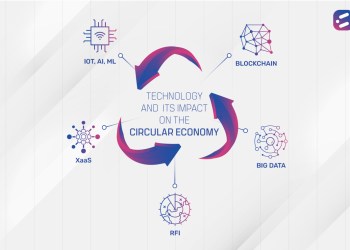Blind spots can occur for many reasons. When a decision maker does not have access to the full picture – due to data siloization, non-immediate access to information, or lack of interoperability between systems and departments – this can result in a blind spot, which can lead to major operation breakdowns.
Better data-sharing between teams leads to more positive outcomes. It reduces dependency on specific individuals who are experts in their spheres. Another way to reduce blind spots is through clear company-wide workflows and processes, which can be defined based on data harvested and shared.
Identifying blind spots
By definition, your team does not know where a blind spot exists. So how do you find them? Usually, a blind spot is identified when a problem occurs and root cause analysis (RCA) identifies the gap that caused the issue.
Chances are that, if your company has been in operation for a while, your team already knows the areas where problems usually arise. Let’s take a simple example. A motorcycle manufacturer is unable to match production plans because a particular part is unavailable.
First, let’s define the variables that impact this situation. These could be external (did the vendor fail to deliver? Was there a logistics and delivery issue?) or internal (was the order placed on time? was an updated production plan not communicated to procurement?). Each variable has a plethora of sub-variables. An RCA drills down until the final sub-variable, the root cause of the problem, is identified.
Blind spots are internal issues. They can be resolved by changing processes within the organization. In this context, ‘the organization’ can include trusted long-term vendor partners.
Another way to identify the root cause is to track and share real-time data pertaining to the issue. In our example, this could include parameters like actual-vs-projected production numbers, just-in-time procurement deadlines, personnel data, subjective metrics such as employee feedback, information from secondary sources, etc.
You can then use the data to identify patterns that correlate to good or bad performance. In many cases, you will find that the patterns are instantly observable. In our example, perhaps data may show that seasonal spikes in production, when correlated with the absence of a particular employee, results in delays. This could indicate a root cause of over-dependence on this employee for vendor communication in case of non-standard production plans.
Using tech to reduce blind spots and mitigate the harm they cause
Root cause analysis and identification of operational blind spots is a vast area which requires constant focus and optimization. An efficient way to resolve these issues at a company level is to take three simple steps:
- Improve collaboration
- Share real-time data
- Define and refine algorithms
Inter-team collaboration is key to ensuring that your enterprise operations flow smoothly. The more each department acts as a silo, the less they will be able to identify inefficiencies in the system that could be easily rectified and resolved. Using collaboration and task management software, it’s possible to give managers a complete bird’s-eye-view of the process from end to end. Make data capture and recording as painless as possible, at every stage.
Once the data is captured, share the data, insights and analytics generated in real-time. Opt for pie charts, graphs and other easily readable data representations to the extent possible. By sharing the data immediately, problems can also be identified and halted early.
Define KRAs, KPIs, and weightage for each sub-variable, based on which you can create algorithms to calculate success on mitigating risks attached to each variable. Constantly study the results from these algorithms and keep refining them to ensure optimized and updated processes with minimal operational blind spots. Having technology manage operations leads to faster and more efficient Business Process Re-engineering (BPR). Once you have all the data available, it’s easy to understand the gaps in the existing process and how to plug them.
Companies looking at CMMI and other certifications can also demonstrate the effectiveness of their processes through technology. The more data is captured and analyzed on an ongoing basis, the easier it is to pass audits and claim certifications.
Operational blind spots are hidden gaps in the system. Allow data to shine a light. Do talk to our experts about how to implement a comprehensive data-based digital transformation strategy that will help you improve operational efficiency through better visibility into all aspects of your operations.













